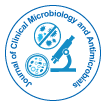

Commentary - (2024)Volume 8, Issue 2
Pyrazinamide (PZA) stands as a fundamental in the treatment of Tuberculosis (TB), playing a pivotal role alongside other first-line drugs in combating this persistent infectious disease. Understanding its efficacy, challenges in clinical use, and global management strategies is integral for optimizing TB treatment outcomes and addressing emerging issues in TB control worldwide.
Efficacy and mechanism of action
Pyrazinamide, introduced in the 1950s, is a primary component of standard TB treatment regimens due to its unique bactericidal activity against Mycobacterium tuberculosis, the causative agent of TB. Unlike other first-line drugs such as isoniazid and rifampicin, PZA targets dormant or semi-dormant bacilli in acidic environments, particularly within macrophages and caseous lesions.
The drug's efficacy in shortening TB treatment duration from months to weeks is attributed to its ability to sterilize persistent bacilli and prevent the emergence of drug-resistant strains. PZA achieves this through disruption of mycobacterial cell membrane function and inhibition of fatty acid synthesis pathways, complementing the action of other anti-TB drugs in multidrug therapy regimens.
Challenges in clinical use and drug resistance
Despite its significant role in TB treatment, PZA presents challenges in clinical practice, primarily related to variable drug absorption, drug interactions, and potential hepatotoxicity. The variability in PZA's pharmacokinetics necessitates dose adjustments and monitoring to ensure therapeutic efficacy while minimizing adverse effects.
Furthermore, the emergence of drug-resistant TB strains, including PZA-resistant strains, poses a significant threat to global TB control efforts. Resistance to PZA can arise due to mutations in genes associated with pyrazinamidase enzyme activity (pncA gene), which converts PZA into its active form.
Surveillance of drug resistance patterns and molecular diagnostics are important for early detection of resistant strains and guiding appropriate treatment regimens to prevent treatment failure and transmission of resistant TB strains.
Global management strategies and public health impact
In the context of global TB management, ensuring universal access to effective TB treatment regimens that include PZA remains a priority. The World Health Organization (WHO) endorses standardized TB treatment protocols, emphasizing the importance of Directly Observed Therapy (DOT) to improve treatment adherence and reduce the risk of drug resistance.
Integrated TB control programs encompassing case detection, diagnosis, treatment, and prevention efforts are necessary for reducing TB incidence and mortality worldwide. Multisectoral collaboration involving healthcare providers, policymakers, researchers, and community stakeholders is important for implementing evidence-based interventions, promoting patientcentered care, and addressing social determinants of TB transmission.
Research and innovation in TB treatment
Ongoing research endeavors focus on optimizing PZA-based TB regimens, research new drug formulations, and investigating novel treatment strategies to enhance efficacy, shorten treatment duration, and minimize adverse effects. Advances in pharmacogenomics and personalized medicine offer potential path for customizing TB treatment based on individual genetic profiles and optimizing drug dosing to improve therapeutic outcomes and reduce treatmentrelated toxicity.
Moreover, efforts to develop new TB drugs and combat multidrug-resistant TB strains underscore the need for sustained investment in research and development. Collaborative initiatives such as the Global TB drug facility and TB alliance facilitate the discovery, development, and accessibility of new TB treatments, ensuring that innovations reach populations in need.
Enhancing TB treatment strategies
Pyrazinamide plays a vital role in the global fight against tuberculosis, contributing to effective treatment regimens that save lives and reduce TB transmission. While challenges persist in clinical use and drug resistance, ongoing research and global collaboration are driving advancements in TB management strategies and therapeutic innovations.
By prioritizing universal access to quality-assured TB diagnosis and treatment, integrating TB care into primary healthcare systems, and leveraging scientific advances in drug discovery and patient management, we can accelerate progress towards TB elimination goals outlined in the WHO end TB strategy. Together, we can achieve a world free of TB, where effective TB treatment regimens, including pyrazinamide, ensure better health outcomes and improved quality of life for individuals and communities affected by this global infectious disease.
Citation: Tanizaki Y (2024) Pyrazinamide: Vital Role in Tuberculosis Treatment and Global Management. J Clin Microbiol Antimicrob. 8:197
Received: 24-May-2024, Manuscript No. JCMA-24-31993 ; Editor assigned: 27-May-2024, Pre QC No. JCMA-24-31993 (PQ); Reviewed: 11-Jun-2024, QC No. JCMA-24-31993 ; Revised: 18-Jun-2024, Manuscript No. JCMA-24-31993 (R); Published: 26-Jun-2024 , DOI: 10.35248/jcma.24.8.197
Copyright: © 2024 Tanizaki Y. This is an open-access article distributed under the terms of the Creative Commons Attribution License, which permits unrestricted use, distribution, and reproduction in any medium, provided the original author and source are credited